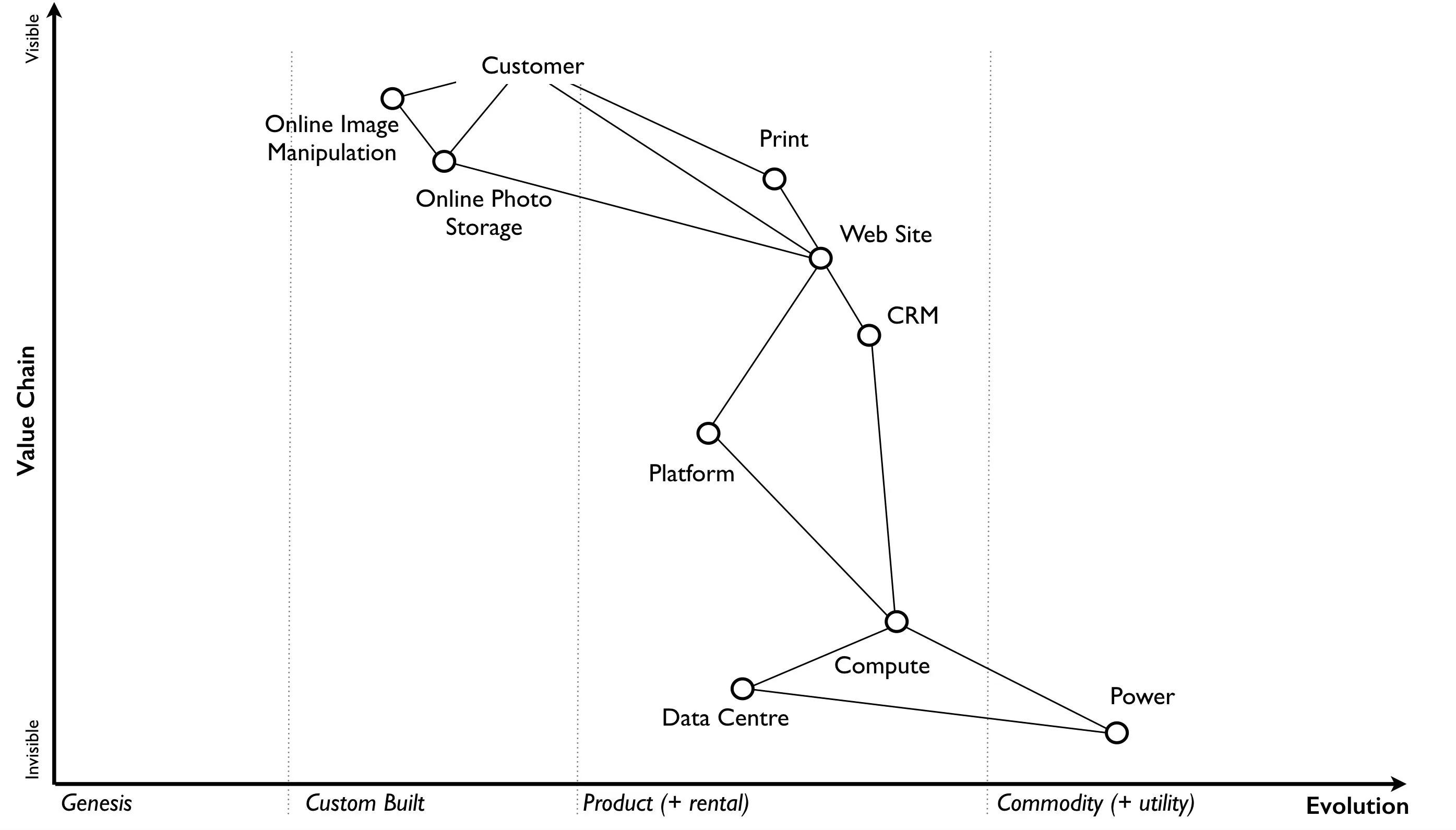Phase: Stop Self Harm
Principle: Challenge Assumptions
Challenge Assumptions
Communication
Motivation
There is little point of doctrine in the organization if no one is willing to challenge it.
Consider these first
Illustrative description
Challenging assumptions is the duty of everyone at the company. This requires transparency and trust.
Detailed description
Challenging assumptions may be uncomfortable and difficult. A map helps by separating the person from what they are presenting. Focus the challenge on the map and what is on the map. Celebrate challenge, it will result in better maps and better understanding. No map is “right”, it is an approximation.
Consider the following map.

With this simple map, we can start to discuss the landscape. For example, have we represented the user need and are we taking steps to meet that user need? Are we missing something such as an unmet need that we haven’t included? Are we treating components in the right way? Are we using a utility for power? Are we somehow building our own power station as though it’s a core differentiator visible to the user? If so, why? Have we included all the relevant components on the map or are we missing key critical items? We can also start to discuss our anticipations of change. What happens when platform becomes more of a utility? How does this affect us? What sort of inertia will we face?
The challenge is an activity where an external party can help. They can bring an outside perspective to challenge a map created within the company. They could help to introduce new forms of gameplay.
